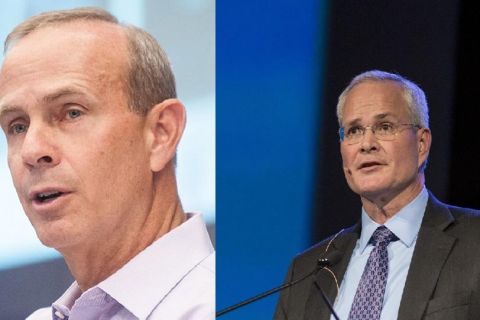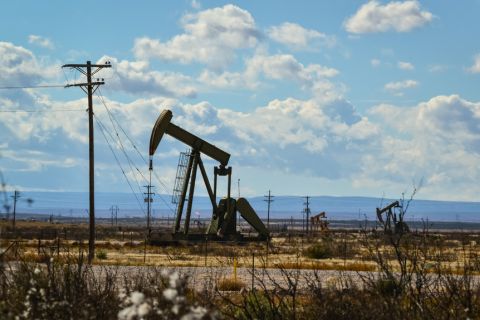Energy Capital Vietnam (ECV) founder, chairman and CEO David Lewis spoke with Pietro D. Pitts, Hart Energy’s international managing editor, regarding Vietnam as an investment destination for U.S. investors. Lewis and the company he leads, ECV—a project development and holding company—continue to view Vietnam as a promising growth market.
Lewis—a former Marine Corps infantry officer and Purple Heart recipient recognized for actions in combat during tours in Iraq—says Vietnam is undergoing an economic renaissance due to an influx of Western manufacturing, which has opened up investment opportunities. But Vietnam, with a population of almost 100 million, needs to dramatically boost its power generation capacity, currently around 80 gigawatts, to sustain its economic growth. Getting there will not be easy, especially as Vietnam looks to move away from coal and its hydropower energy sources are near capacity, according to Lewis. As such, future power generation will be dominated by renewables, supported by base load supply from domestic natural gas and initial imports of U.S. LNG. With this transition, Vietnam looks to enhance energy and climate security and realize its net-zero goals by 2050.

Pietro D. Pitts: Why should U.S. investors keep an eye on Vietnam?
David Lewis: Vietnam’s manufacturing sector is the heart of the economy and has been for some time. Given recent tensions between the U.S. and China, coupled with a worldwide push to diversify away from China, Vietnam is increasingly on people's radar.
After the COVID-19 pandemic, the world recognized there was too much risk concentrated in one country: China. This is another reason why Vietnam, which shares a thousand-mile border with China, has become more attractive. Surprisingly, Vietnam has the world's second-largest supply of critical minerals with 22 million tons, only behind China which has 44 million tons.
PDP: How does that manufacturing dominance factor in Vietnam’s push to displace its coal consumption with gas?
DL: The [manufacturing] focus is about Vietnam's ability to support the semiconductor supply chain. It's not just about manufacturing T-shirts or tennis shoes but about growing the value chain. And as you grow that value chain, the need for energy security only increases. Now Vietnam is in a position where it needs to double its power generation capacity in the next 10 years… It's going to be very challenging [for the Vietnam government alone] to meet these goals.
In terms of the energy transition, Vietnam was an early mover to shift away from coal to gas, and for two main reasons. The first is national security since previously the plan was to import coal from China. But China's aggression inhibited Vietnam's ability to develop its domestic reserves as much as they would have liked. And even if Vietnam could completely develop its reserves, the country still consumes more than what it’ll be able to produce.
The second is because of protests that erupted in the streets of Vietnam about coal-related emissions.
The Vietnamese government recognizes that [tapping into] U.S. LNG kills two birds with one stone since the imports can’t be blocked or stopped by the Chinese while at the same time the use of [a less polluting energy source] bodes well with its citizens.
PDP: What is Vietnam doing to boost its storage capacity for certain refined products, and even LNG?
DL: Vietnam is importing LPG and crude oil and we're in the middle of discussions around supporting Vietnam's ability through the state-owned company [Petrovietnam] to import LPG and oil from the U.S.
Vietnam has only around 10 days of storage capacity in terms of traditional refined products like LPG and diesel. They recognize that's a national security risk for them, so they want to grow that to 90 days.
To do that they will build half of the capacity in the south of the country and the other half in the north. In recent months we've inked MOUs [memorandum of understanding] with the provincial authorities over the two strategic locations for these port-related projects, which will be regional hubs. The ports will be for movement of traditional container cargo as well as for the storage and distribution of LPG and LNG.
PDP: Do the Vietnamese have an appetite to invest in U.S. gas supply projects?
DL: I haven't had the conversation with [the Vietnamese government] yet, but it makes a lot of sense. I think there's probably a case to be made for buyers as it relates to co-investment into U.S. upstream, midstream and liquefaction businesses. It’s smart business. That's the next level, but I can see that evolving.
Over the last eight years, we've established strong trust and relationships with the [Vietnamese] government and they're actually pushing more things in our direction. Now we're focused on execution. Importantly, you've got the deep port coming whereby we can get more stuff in from the U.S., so you would expect that we're going to have a boom in bilateral trade between the two countries.
PDP: In terms of LNG, that’s still some years out before you’ll see the first cargos, right?
DL: Yeah, we're still looking at probably later this decade.
PDP: Have you considered looking at Alaska?
DL: Alaska has a ton of potential and is really the next great opportunity. If the U.S. is looking at where and how to begin developing more export capacity, it's Alaska, in my opinion.
PDP: Do you think there's a chance the Aussies could leapfrog the Americans in terms of supplying gas for Vietnam?
DL: The reason why the U.S. is the world's largest supplier of LNG is because we have the most competitive LNG pricing. Even though geographically [Australia] is closer, the world is already telling us the U.S. molecule is the most competitively priced. When the [U.S.] began exporting in 2016, we effectively ended up breaking the traditional method of how contracting works because we have flexibility and destination and that serves the world’s interest. Really, what the U.S. shale revolution did was to break the traditional link between oil and gas pricing.
Again, the U.S. has the most transparent, competitive and insulated market and there’s no undue exposure to outside risk. So that's a very obvious case for U.S. LNG, but this is why we're winning.
PDP: Does the Vietnamese government fully understand the importance of private investment to move forward the planned projects?
DL: The government recognizes the need to prioritize energy-related private investment. Resolution No. 55, from the public bureau issued in Feb. 2020, is basically official policy for prioritizing private investment with a focus on prioritizing cleaner forms of energy.
Vietnam wants to prioritize U.S. investment in the country and [in general terms] wants to adopt the Taiwan model, meaning that they want to know that the U.S. isn’t going away.
Vietnam recognizes it has a border with a neighbor that's really big and aggressive; hence, why they want to become closer friends with the U.S. That was the main reason why [President Joe] Biden was recently there. And even though Vietnam has a communist government, it’s with the U.S. on China. There's very strong alignment between the U.S. and Vietnam, which has a really strong workforce that has a lot of potential. At the end of the day, Vietnam is a victim of its own success.
Again, it's not just the molecules they import, but if you look at the energy demand profile, [Vietnam] needs to build out 70 gigawatts of power generation in the next 10 years. An estimated $150 billion in investment is needed for new power generation and transition infrastructure alone, and that's $130 billion more than they have.
PDP: The Vietnamese state remains a big player in the economy. Are there signs the government is willing to listen more to the private sector?
DL: We're witnessing [Vietnam] move from strict central planning to incorporating feedback from the private sector into how the planning process works and how to properly build policies that are conducive to attracting foreign capital.
The creation of wealth for the [Vietnamese] people is inextricably tied to the U.S. because the U.S. is their largest export market. So that's why they say they are in the middle. They import a lot of stuff from China, but they export most stuff to the U.S. Vietnam knows that it would be detrimental to their own good, and really it would be an existential risk if they were to do anything that prohibited the ability to have good relations with the U.S. that [would impact] foreign investment.
Vietnam today is China 20 years ago … less global ambitions about world domination. But Vietnam wants to be everybody's friend.
PDP: Should U.S. investors worry about expropriation risks in Vietnam?
DL: The expropriation risk is relatively zero. Again, there’s no such thing as zero risk anywhere. But that being said, the risk of [expropriation] is very low. Again, Vietnam is very committed to following the law.
PDP: What’s the biggest headwind that Vietnam confronts?
DL: Perception. Investor perception about Vietnam, like what do the Vietnamese offer, their history and where they want to go. So that's the story that's not really being told. There's been a blind spot here and it's going to be corrected and we're at the forefront of that.
PDP: What does Vietnam’s hydropower look like?
DL: Vietnam more or less has already maxed out its hydropower capacity. There's a little bit they can do here or there, like small scale, but it's crumbs, they're nibbling. When you look at base load supply, the world needs to recognize that intermittent power is intermittent. You need dispatchable power base load supply. And currently, as we stand today, that comes in four forms: coal, nuclear, gas and hydro. Again, Vietnam has maxed out hydro, they don't want coal, and they're not comfortable with nuclear. Gas is Vietnam’s only option for dispatchable power.
PDP: What about other renewables?
DL: Vietnam is curious about hydrogen but there's curiosity as to when and how it makes sense commercially. There's a big push and a lot of support for renewables like wind and solar. This is a popular topic of discussion and Vietnam has ambitions and is interested in understanding offshore wind.
PDP: How is Vietnam viewing the global push to get to net zero?
DL: In November 2021, Vietnam’s Prime Minister Pham Minh Chinh announced goals for the country to achieve net zero by 2050. That will require co-investment and high-quality credits. And this is where a collaboration with the World Bank comes into play. The World Bank has a low carbon city program, and the whole premise is the fastest and best way to reduce carbon is to not produce it. That's where gains in efficiency in Vietnam are huge and where Vietnam can help reduce their emission profile.
PDP: How do you view Asia, in particular Vietnam, tackling energy security?
DL: The Asians have no illusions about what they need to have energy security. You see Japan, Korea, China all rapidly sucking up long-term contracts. In Vietnam, we’re communicating with the government, but we're also developing fully private infrastructure and we’re making decisions. We’re not assuming commodity risk and we're going to make sure we have the ability to hedge those long-term prices in a manner that passes through easily and efficiently. That's what I believe is fundamental to supporting, enabling this infrastructure to get built. You can't take on risks like that.
PDP: What’s your plan or view on managing commodity risks?
DL: We have developed trust with the government because we showed them early that we could bring the expertise and knowledge. This is how we manage commodity and financial risks in order to bring foreign investment to the country.
For example, the EU-Vietnam free trade agreement provides enforcement mechanisms within the contracts that allows the projects to become bankable without asking anything additional from the government. The reality is modern Vietnam has quintupled its foreign currency reserves and the country is one notch below credit grade and they'll become credit worthy before the end of this decade.
We’re comfortable that the private insurance market has an appetite for Vietnam [with its] country risk [profile] so we can provide full private insurance to cover our equity capital. For example, when we sit down with the government and negotiate the power purchase agreement where they guarantee to buy a certain volume of electricity that we'll back with our fuel supply agreement, we make sure that the cost of the commodity is passed through to the cost of power.
The goal is to negotiate where we're sharing risk and by structuring it properly. It allows us to de-risk the project such that it allows the capital to come in.
Recommended Reading
Gulfport Plans Liquids-rich Program After ‘Strong’ Ohio Oil Tests
2024-05-01 - Appalachia gas producer Gulfport Energy continues to report “strong oil production” from a two-well Hendershot pad drilled in eastern Ohio last year. Gulfport plans to develop additional liquids-rich opportunities this year as natural gas prices hover near record lows.
Decoding the Delaware: How E&Ps Are Unlocking the Future
2024-05-01 - The basin is deeper, gassier, more geologically complex and more remote than the Midland Basin to the east. But the Delaware is too sweet of a prize to pass up for many of the nation’s top oil and gas producers.
Chevron CEO: Permian, D-J Basin Production Fuels US Output Growth
2024-04-29 - Chevron continues to prioritize Permian Basin investment for new production and is seeing D-J Basin growth after closing its $6.3 billion acquisition of PDC Energy last year, CEO Mike Wirth said.
Novo II Reloads, Aims for Delaware Deals After $1.5B Exit Last Year
2024-04-24 - After Novo I sold its Delaware Basin position for $1.5 billion last year, Novo Oil & Gas II is reloading with EnCap backing and aiming for more Delaware deals.





